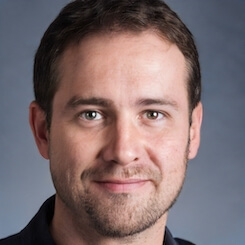Second of two parts
The FDA is laying groundwork that will play a major role in determining the future of real-world evidence. In just a few years the use of RWE has expanded dramatically, but it has yet to establish a clear role for itself.
As evidence, it continues to take a back seat to randomized controlled trials, especially in the development of clinical guidelines. But the back seat doesn’t mean there isn’t a seat at the table for RWE. Sources of real-world data, such as claims databases, have improved dramatically. Real-world study designs are more powerful, and real-world analytic tools are increasingly able to ferret out meaningful results.
These improvements are partly the result of legislation that requires the FDA to give more weight to RWE and formalize RWE’s role in the agency’s approval processes. But the cause-and-effect goes in the other direction too: Recent legislation has included RWE because it has gotten stronger and more reliable. Under the 21st Century Cures Act, which was passed in 2016, the FDA is required to establish a program to evaluate the potential use of RWE in approving new indications for existing drugs as well as help support postapproval safety and efficacy studies. The Prescription Drug User Fee Act (PDUFA) VI has similar provisions and requires the FDA to engage stakeholders in the process.
Giving providers incentives
Two September 2017 workshops sponsored by the FDA kicked off the agency’s efforts to determine how exactly RWE will fit into its approval processes. One was organized by the National Academies of Sciences, Engineering, and Medicine and the other by Duke University’s Margolis Center for Health Policy.
The National Academy of Medicine brought together providers, payers, and pharmaceutical executives to discuss ways to lift the barriers to collecting data and producing quality RWE studies. Currently there is very little incentive—especially for providers—to contribute the most accurate data to RWE efforts.
“To enable greater adoption of RWE in clinical and regulatory decisions, we’ll need to work with the health care system to change the way clinical information is collected. Ideally, we’d like to have a system where providers have the right incentives to enter clinically relevant information into EMRs at the point of care,” said FDA Commissioner Scott Gottlieb, MD, at the conference. It is now recognized that key EMR data, such as a diagnosis code, is geared to fulfill billing requirements and not necessarily to provide the most accurate clinical data.
The academy held a second workshop last month that focused on issues surrounding the types and quality of real-world data. A third workshop, scheduled for July, will examine approaches for operationalizing the collection and use of real-world evidence. The goal is to establish a standardized data set.
Demystifying ‘it depends’
The Margolis Center meeting dealt with how RWE might be used in the regulatory process. The Margolis Center has a close relationship with the FDA. The FDA funds a number of projects at the center, and Mark McClellan, MD, who had stints as FDA commissioner and CMS administrator during the George W. Bush administration, is the center’s director. In addition, Robert Califf, MD, the FDA commissioner during the final two years of the Obama administration, is a vice chancellor at Duke.
After the meeting, the Margolis Center produced a white paper outlining a framework for the use of RWE in the drug regulatory process. In putting the white paper together, the Margolis Center staff asked payers, drug companies, and others for their thoughts on the role RWE can play in FDA decisions. “The common answer that came back was, ‘well it depends,’” says Gregory Daniel, the center’s deputy director.
In other words, the experts did not identify specific areas where the FDA should incorporate RWE, or the type of RWE for the FDA to use; Daniel says the white paper is intended to provide a framework that demystifies the “it depends.” The white paper says four factors will shape the role of RWE: the regulatory context, the clinical context, the data context, and methodology.
The regulatory context concerns the kind of regulatory decision that needs to be made; for example, using RWE in approvals for new indications. How RWE fits into a clinical context hinges on whether it provides some insight into a clinical issue and perhaps would influence a diagnosis or treatment choice. The data context includes the extent to which RWE provides reliable data, and the methodology element relates to the strength of the RWE study design.
Making sure that RWE is a good fit
Limits on RWE
The FDA’s initiatives will help to define the specific role that RWE will play with medications and medical devices. Gottlieb has acknowledged that the growing number and sophistication of RWE studies has outpaced the FDA’s capacity for using the information—and that it’s time for the agency to catch up.
“We need to close the evidence gap between the information we use to make FDA’s decisions and the evidence increasingly used by the medical community, by payers, and by others charged with making health care decisions,” Gottlieb said at the National Academy of Medicine’s first meeting on RWE last September.
The hierarchy of evidence is evolving as the volume and reliability of RWE improves, but Gottlieb also drew a line. “This is the hierarchy that has long defined the reliability of clinical evidence, and [it] puts the randomized, prospective, placebo-controlled trial at the top of that pyramid. This pyramid has remained unchanged.”
The use of RWE will definitely continue to grow both inside and outside of the FDA scope of activities. For the foreseeable future, though, RWE will continue to play second fiddle to randomized clinical trials. But second fiddle is better than not playing at all.

Paul Lendner ist ein praktizierender Experte im Bereich Gesundheit, Medizin und Fitness. Er schreibt bereits seit über 5 Jahren für das Managed Care Mag. Mit seinen Artikeln, die einen einzigartigen Expertenstatus nachweisen, liefert er unseren Lesern nicht nur Mehrwert, sondern auch Hilfestellung bei ihren Problemen.
